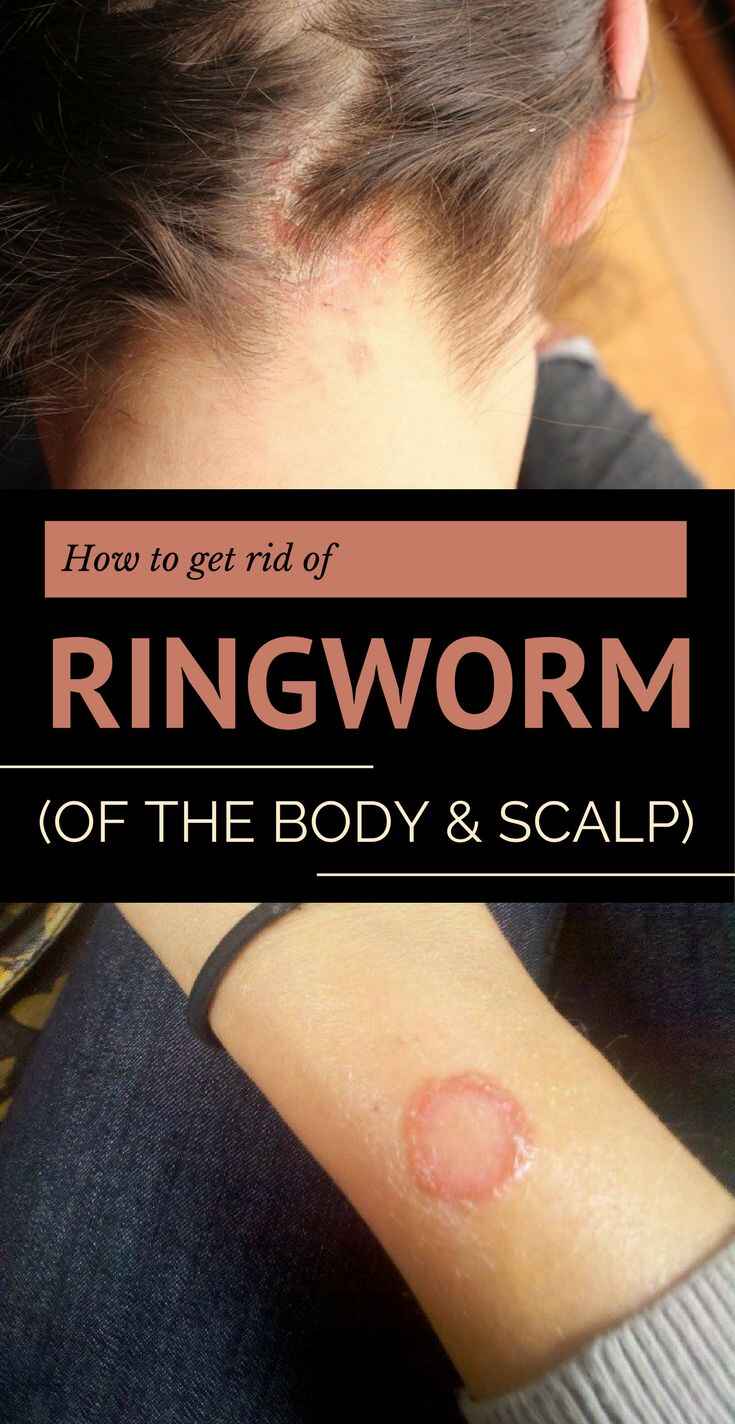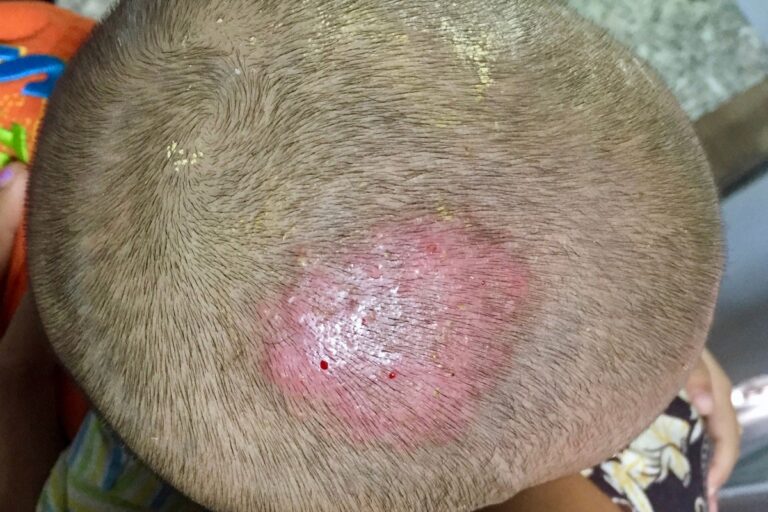RINGWORM (SCALP) – SYMPTOMS, CAUSES, AND TREATMENT
The ringworm of the scalp (tinea capitis) is a rash caused by a fungal infection. It generally causes itchy, scaly, bald patches on the head. Ringworm gets its name due to its circular appearance. There are not any worms involved.
Ringworm on the scalp is a contagious infection. It is most frequent in toddlers and school-age children. Tinea capitis is associated with the athlete’s foot (tinea pedis), jock itch (tinea cruris), and ringworm of the body (tinea corporis).
Medication taken by mouth could kill the fungus that causes ringworm of the scalp. Medicated shampoos might help keep a person from spreading the infection to others.

SYMPTOMS
Signs and symptoms of ringworm of the scalp might include:
- One or more round, scaly, or inflamed patches where the hair has broken off at or close to the scalp
- Patches that gradually get bigger and have small, black dots where the hair has broken off
- Brittle or fragile hair that could be easily broken or pulled out
- Tender or painful areas on the scalp
WHEN SHOULD YOU SEE A DOCTOR?
Several conditions affecting the scalp might have a similar appearance. See your child’s doctor if your child has any hair loss, scaling or itchiness of the scalp, or other uncommon appearance of the scalp. It is important to get an accurate diagnosis and immediate treatment with prescription medicine. Non-prescription creams, lotions, and powders would not get rid of ringworm of the scalp.

CAUSES
The ringworm of the scalp is caused by a common fungus. The fungus attacks the outer layer of the skin on the scalp and the hair. This causes those hairs to break up. The condition could be spread in the following ways:
- Human to human -Ringworm usually spreads through direct skin-to-skin contact with an infected person.
- Animal to human – You could contract ringworm by touching an animal with ringworm. Ringworm could spread while petting or grooming dogs or cats with ringworm. Ringworm is pretty common in kittens, puppies, cows, goats, pigs, and horses.
- Object to human – It is possible for ringworm to spread by contact with objects or surfaces that an infected human or animal has recently touched. This includes items like clothes, towels, bedding, combs, and brushes
RISK FACTORS
Risk factors for ringworm of the scalp are:
- Age – Ringworm of the scalp is most frequent in toddlers and school-age children.
- Exposure to other children – Outbreaks of ringworm is frequent in schools and child care centers where the infection easily spreads with close contact.
- Exposure to pets – A pet, like a cat or a dog, could have the infection without showing any signs. Children could get the infection by touching the animal.
COMPLICATIONS
Some people with ringworm of the scalp might develop a severe inflammation known as kerion. Kerion appears as soft, raised swellings that drain the pus and cause thick, yellow crusting on the scalp.
With kerion, the hair falls out or could be easily pulled out. The condition might be caused by an overly vigorous reaction to the fungus and could lead to scarring and permanent hair loss.

PREVENTION
Ringworm of the scalp is hard to prevent. The fungus that causes it is common, and the condition is contagious even before symptoms show up. Take these steps to lower the risk of ringworm:
- Educate yourself and others – Be aware of the risk of ringworm from infected humans or pets. Tell children about ringworm, what to watch for and how to prevent the infection.
- Shampoo regularly – Be sure to wash your child’s scalp regularly, particularly after haircuts. Some scalp conditioning products, like coconut oil and pomades with selenium, may help prevent ringworm of the scalp.
- Keep skin clean and dry – Make sure children wash their hands, including after playing with pets. Keep shared areas clean, particularly in schools, child care centers, gyms, and locker rooms.
- Avoid infected animals – The infection usually looks like a patch of skin where fur is missing. If you have pets or other animals that commonly carry ringworm, ask your veterinarian to examine them for the infection.
- Avoid sharing personal items – Teach children not to let others use their clothes, towels, hairbrushes, sports gear, or other personal items.
DIAGNOSIS
Your doctor will likely be able to diagnose ringworm of the scalp by looking at the affected skin and asking specific questions. To confirm the diagnosis, your doctor might take a sample of hair or skin to be tested in a laboratory. Testing a sample of hair or skin could show if a fungus is present.
TREATMENT
Treatment for ringworm of the scalp needs a prescription-strength antifungal medication taken by mouth. The first-choice medication is generally griseofulvin (Gris-Peg). Alternatives may be used if griseofulvin is not working or your child is allergic to it. These are terbinafine, itraconazole (Spoanox, Tolsura) and fluconazole (Diflucan). Your child may need to take one of these medications for six weeks or more — until hair regrows. Generally, with successful treatment, the bald spots will grow hair again and the skin will heal without scarring.
Your doctor may recommend that you also wash your child’s hair with a prescription-strength medicated shampoo. The shampoo removes fungus spores and helps prevent spreading the infection to others or to other regions of the body.
It is not required to shave the head or cut the hair as part of the treatment.
If you or anyone you know is suffering from ringworm on the scalp, our expert providers at Specialty Care Clinics will take care of your health and help you recover.
Call us on (469) 545-9983 to book an appointment with our specialists.
